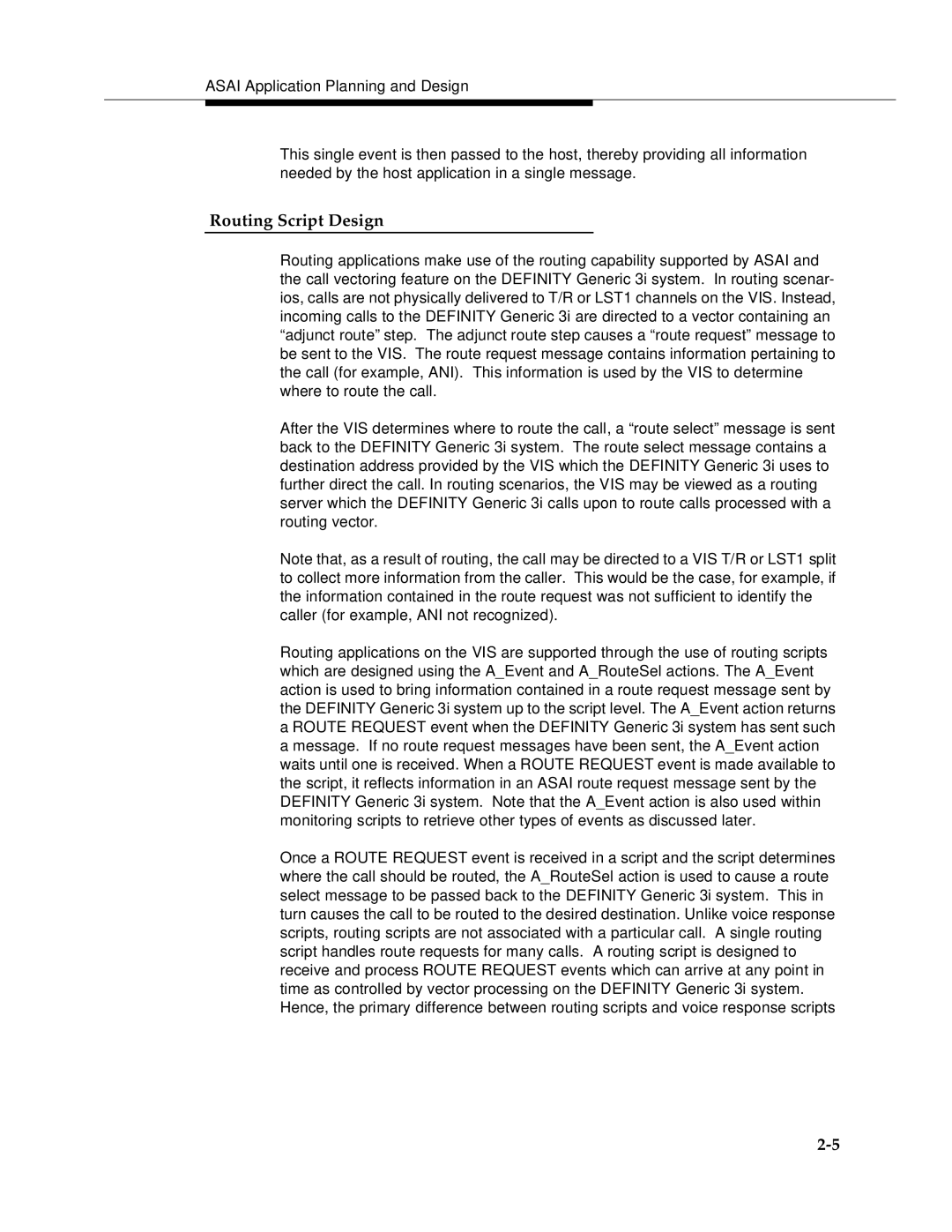
ASAI Application Planning and Design
This single event is then passed to the host, thereby providing all information needed by the host application in a single message.
Routing Script Design
Routing applications make use of the routing capability supported by ASAI and the call vectoring feature on the DEFINITY Generic 3i system. In routing scenar- ios, calls are not physically delivered to T/R or LST1 channels on the VIS. Instead, incoming calls to the DEFINITY Generic 3i are directed to a vector containing an “adjunct route” step. The adjunct route step causes a “route request” message to be sent to the VIS. The route request message contains information pertaining to the call (for example, ANI). This information is used by the VIS to determine where to route the call.
After the VIS determines where to route the call, a “route select” message is sent back to the DEFINITY Generic 3i system. The route select message contains a destination address provided by the VIS which the DEFINITY Generic 3i uses to further direct the call. In routing scenarios, the VIS may be viewed as a routing server which the DEFINITY Generic 3i calls upon to route calls processed with a routing vector.
Note that, as a result of routing, the call may be directed to a VIS T/R or LST1 split to collect more information from the caller. This would be the case, for example, if the information contained in the route request was not sufficient to identify the caller (for example, ANI not recognized).
Routing applications on the VIS are supported through the use of routing scripts which are designed using the A_Event and A_RouteSel actions. The A_Event action is used to bring information contained in a route request message sent by the DEFINITY Generic 3i system up to the script level. The A_Event action returns a ROUTE REQUEST event when the DEFINITY Generic 3i system has sent such a message. If no route request messages have been sent, the A_Event action waits until one is received. When a ROUTE REQUEST event is made available to the script, it reflects information in an ASAI route request message sent by the DEFINITY Generic 3i system. Note that the A_Event action is also used within monitoring scripts to retrieve other types of events as discussed later.
Once a ROUTE REQUEST event is received in a script and the script determines where the call should be routed, the A_RouteSel action is used to cause a route select message to be passed back to the DEFINITY Generic 3i system. This in turn causes the call to be routed to the desired destination. Unlike voice response scripts, routing scripts are not associated with a particular call. A single routing script handles route requests for many calls. A routing script is designed to receive and process ROUTE REQUEST events which can arrive at any point in time as controlled by vector processing on the DEFINITY Generic 3i system. Hence, the primary difference between routing scripts and voice response scripts
